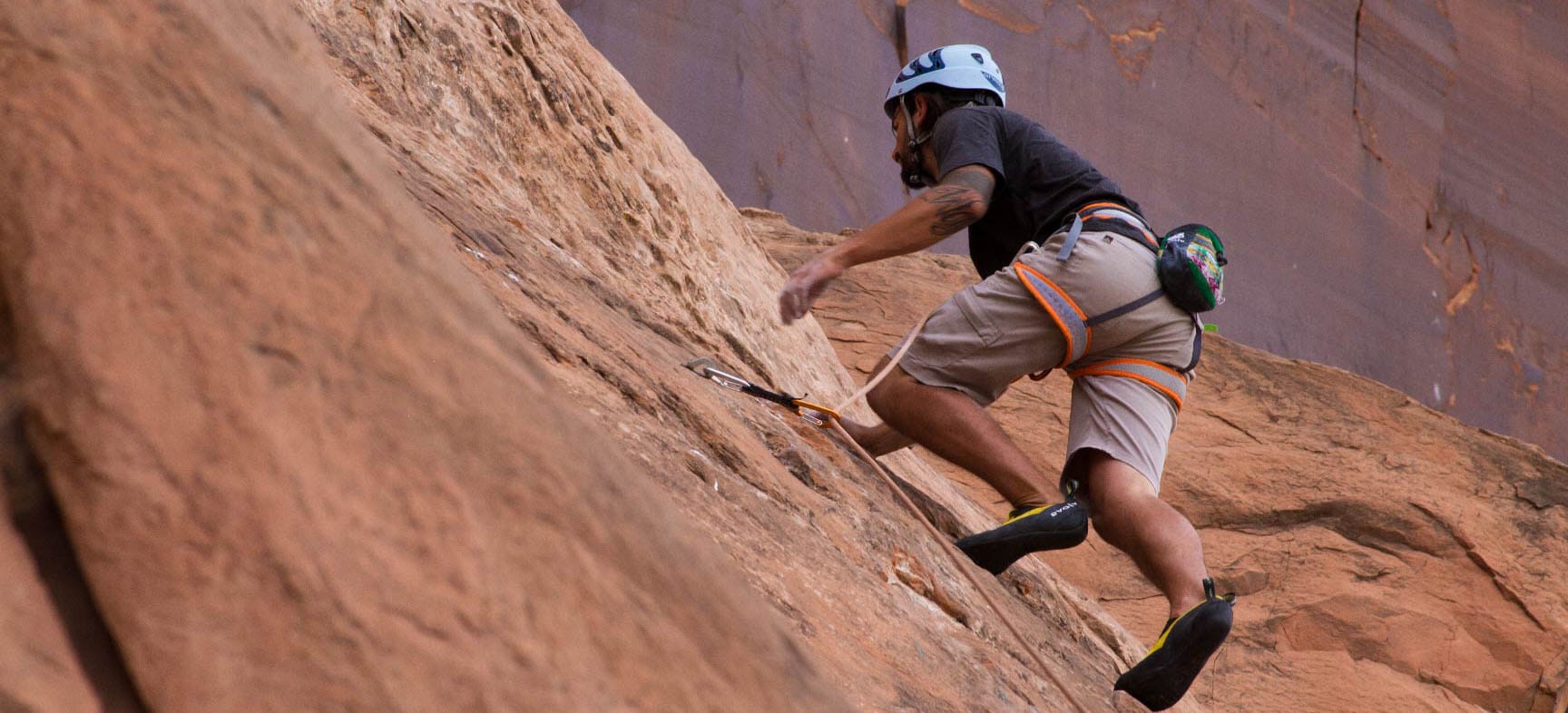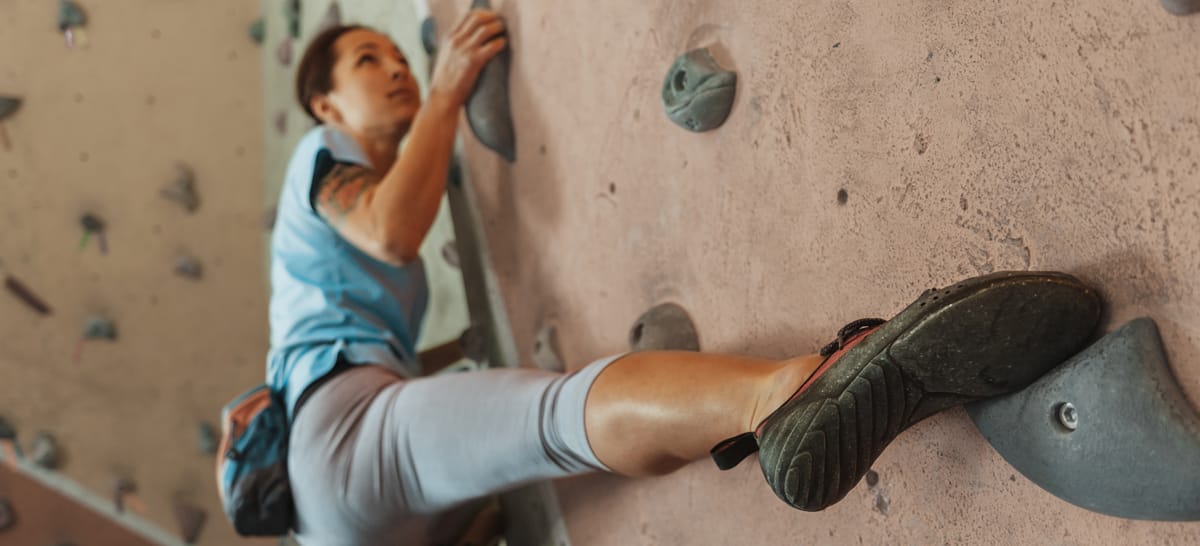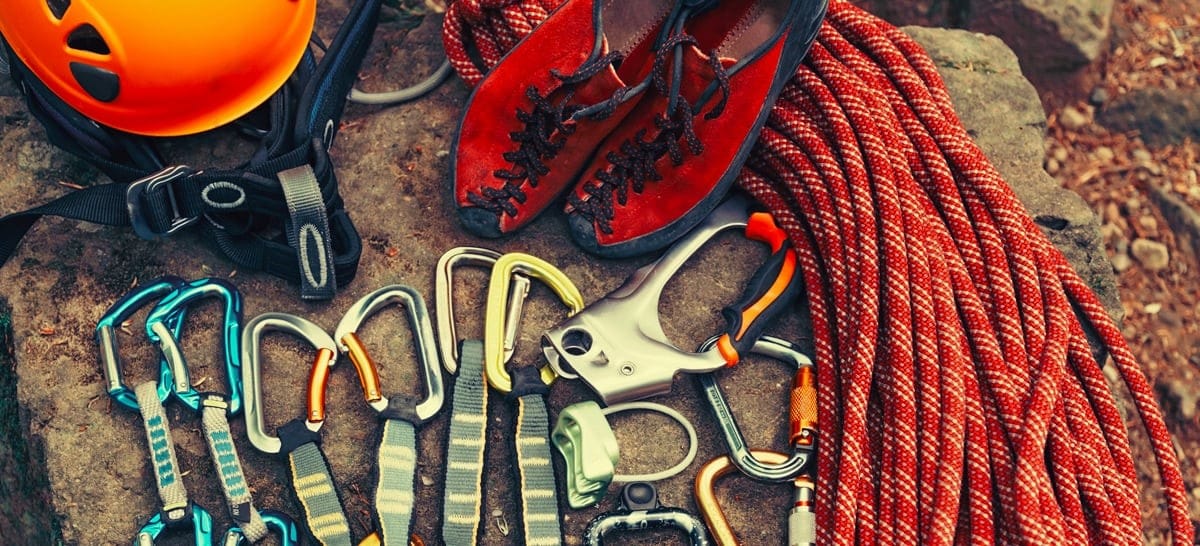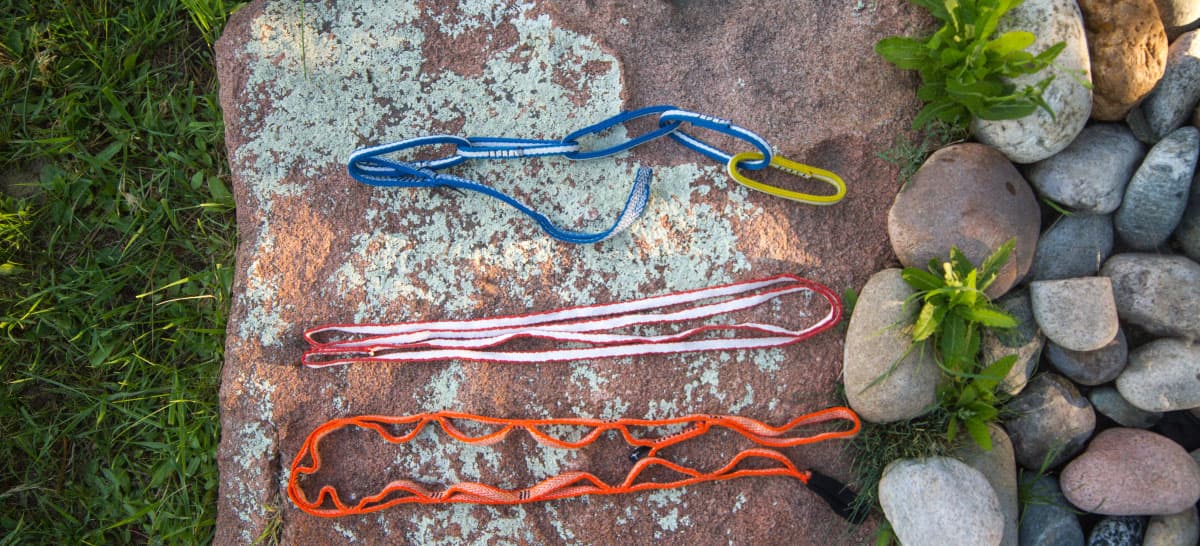Climbing Shoe Fit
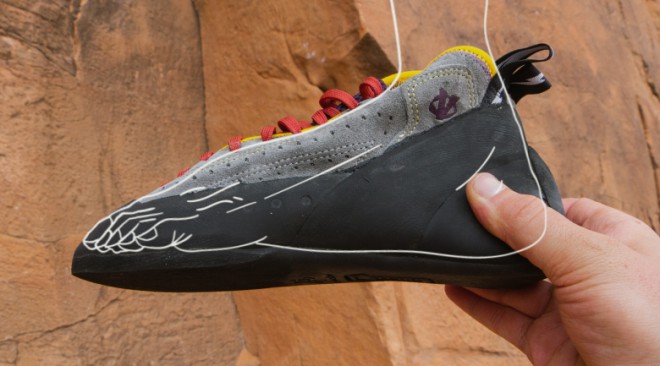
Fit the shoe so that your big toe is just touching the end of the shoe. Keep in mind that climbing shoes will stretch a little. Leather shoes can stretch up to a full size, where synthetic shoes typically don't stretch more than a half-size.
Feeling the front of the shoe with your toe can feel like a strange fit for someone who isn't used to wearing climbing shoes, but it's important to have that close fit to maximize your performance on the wall. Fitting your shoe this way will allow you to get good connection with the rock as you climb without making your toes feel too cramped.
Types of Climbing Shoe Fit
There are two major shapes for climbing shoes. Choose between a flat lasted climbing shoe or a shoe with a cambered last. Look at the pictures below to see how to tell the difference between the two shapes.
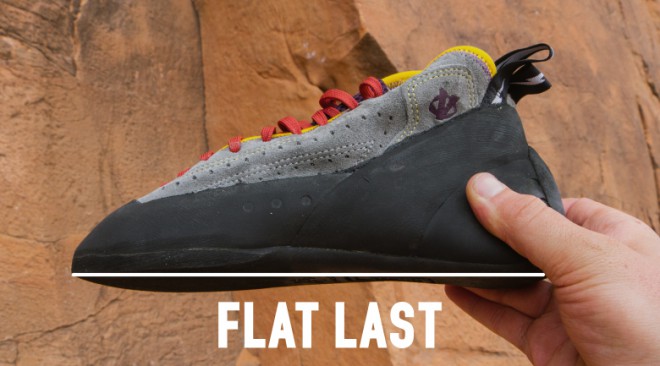
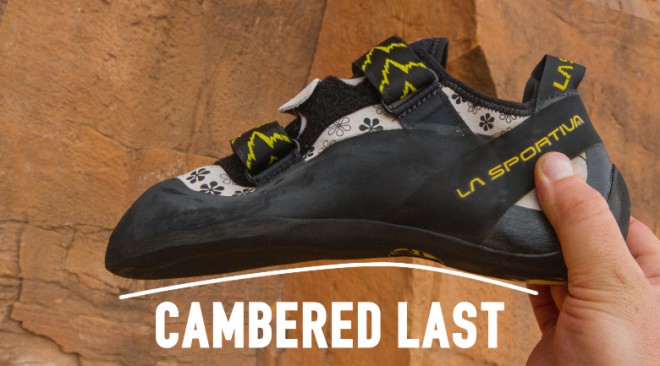
Flat Lasted Climbing Shoes
A flatter shaped shoe with a more relaxed fit is going to be a better choice for someone looking to enjoy more relaxed climbing-filled days. Flat lasted shoes also tend to be a better fit for traditional climbing. They allow you to slide your shoe more easily into cracks.
Camber Lasted Climbing Shoes
As a general rule for sport climbing, the more difficult and steep the climbs are, the more you're going to want an aggressive down-turned performance fit shoe. If you're trying to push your grade, a tight fitting shoe is going to be important for achieving maximum performance and control.
Climbing Shoe Features
One of the biggest features to consider when choosing a pair of rock climbing shoes is the type of closure system that the shoes have. Choose between a lace-up closure, hook-and-loop closure, or slip on shoes.
Lace-Up Closures
Lace-up closures will offer the greatest flexibility in achieving a snug, custom fit. Easily tighten or loosen specific points of the lacing system to get the desired feel. Different lacing styles can also help ensure that the shoe is comfortable for your climbing-filled days.
Hook-and-Loop Closures
Hook-and-Loop closures make it easier to put your shoes on or take your shoes off throughout the day. They don't offer as many points of adjustment, which hinders the ability to customize your shoe fit as much as a lace-up closure allows. However, being able to quickly take off your shoes between climbs is a benefit that many people enjoy having.
Slip-On Climbing Shoes
Slip-on shoes are exactly what they sound like. Simply slip the shoe on your foot and you're ready to climb. These shoes offer the least flexibility in fit, but allow for more comfort and easy on-and-off. Another great benefit slip-on shoes have is that they don't have laces that could untie or straps that could come undone.
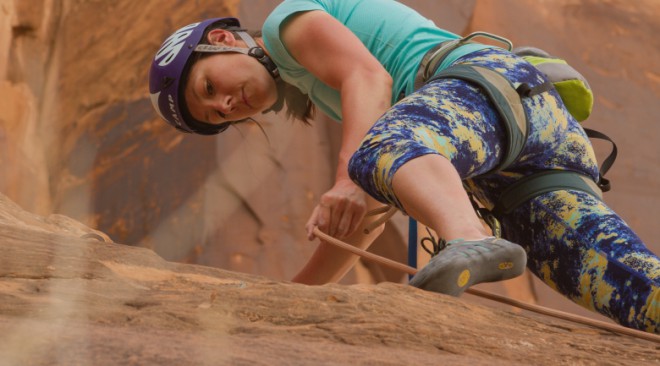
Other features to look at include the materials used to construct the shoe. This involves the sticky rubber on the outsole, and the construction of the upper.
Synthetic uppers won't stretch as much as leather shoes over time, and synthetic shoes tend to offer higher performance. However, leather shoes offer a very comfortable feel and form to your foot well over time.
Every manufacturer has different rubber compounds that they use. Stickier rubber offers great smearing performance and tend to connect better with the rock. The soft rubber won't last quite as long, though. Harder rubbers offer great performance with edging and will hold up better over the course of their life.
Whether you face climb (sport climb), crack climb (trad climb), or use your shoes for bouldering, we hope these tips help you find the right shoes for you. Take a look at our selection of shoes shown below.
And to see these types of climbing shoes explained by The Bro'd Trip's Justin Fricke, check out this video.
